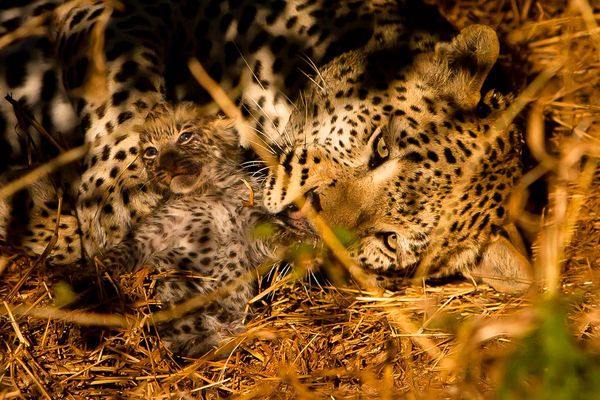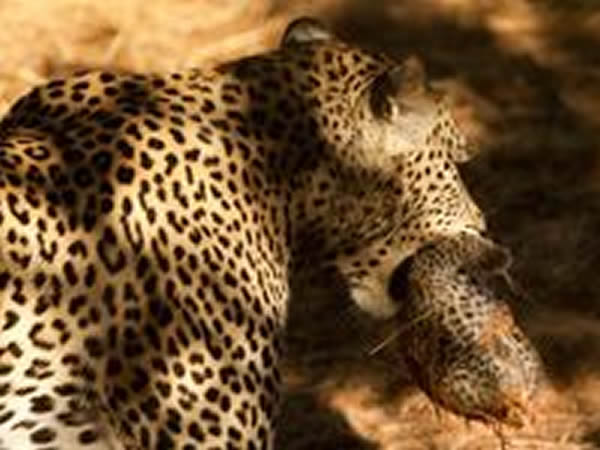Rare Picture: Male Leopard Kills, Eats Cub
A photographer in Botswana has captured rare pictures of a male leopard (Panthera pardus) killing and eating a cub.
In March in a remote part of the Okavango Delta (map), Ryan Green was tracking a well-known female leopard named Legadema, who had hid her weeks-old cubs in a large tree hollow
He noticed Legadema moving around nervously when a male new to the area emerged from her den with a mewling cub in its mouth.
The interloper settled with the baby under the tree, playing with it and licking it in an "almost intimate, affectionate fashion," Green said in a statement.
But "what appeared to be a gentle, tender encounter was in fact far more sinister": The male, later named Mmolai—killer in the national language Setswana—was slowly eating the cub, said Green, of Wilderness Safaris in Mombo.
After the male leopard left, "not a trace of what had recently happened remained—not a drop of blood, a wisp of fur, nothing," said Green, who later photographed Legadema carrying away a second cub.
As "horrifying" as it seems, infanticide is relatively common in nature. It often occurs when a male takes over a new territory and kills the young to which it's not related, noted Luke Hunter, president of the big-cat conservation group Panthera, which collaborates with National Geographic's Big Cats Initiative.
Though well documented in African lions (Panthera leo), the practice is rarely photographed in big cats—making Green's series of pictures unique, Hunter said.
The male leopard Mmolai was recently photographed eating a cub in Botswana's Okavango Delta.
The mother leopard Legadema carries away a second cub. Photograph courtesy Ryan Green.
Cub Killers Explained
Hunter and colleagues have been studying leopard infanticide near South Africa's Kruger National Park for 13 years. In data recently submitted for publication, the team found that 45 of 280 dead leopard cubs the researchers recorded during that period were killed by male leopards.
Males claiming new territory have a "sound evolutionary reason" to kill cubs—it brings the mothers back into heat, allowing the males to sire their own cubs. "They can't afford to be stepdads," Hunter said.
It's unknown how the males know which cubs are their own—for instance, it's unlikely that the males recognize each baby by scent. More likely, he said, is that the males remember individual adult females and whether they've met before.
A mother would certainly try to defend her young from a strange male, but if he successfully takes over her territory, her efforts would only postpone the eventual killing, Hunter said.
However, Hunter emphasized that male leopards aren't always "murderous, rampaging, rogue animals."
Territorial leopard males interact with females and cubs a lot, forming long-term bonds, he said.
And once they have their own young, he said, they care for and defend the cubs against other males, making them "excellent fathers."(Christine Dell'Amore,National Geographic News,Published April 22, 2013)













